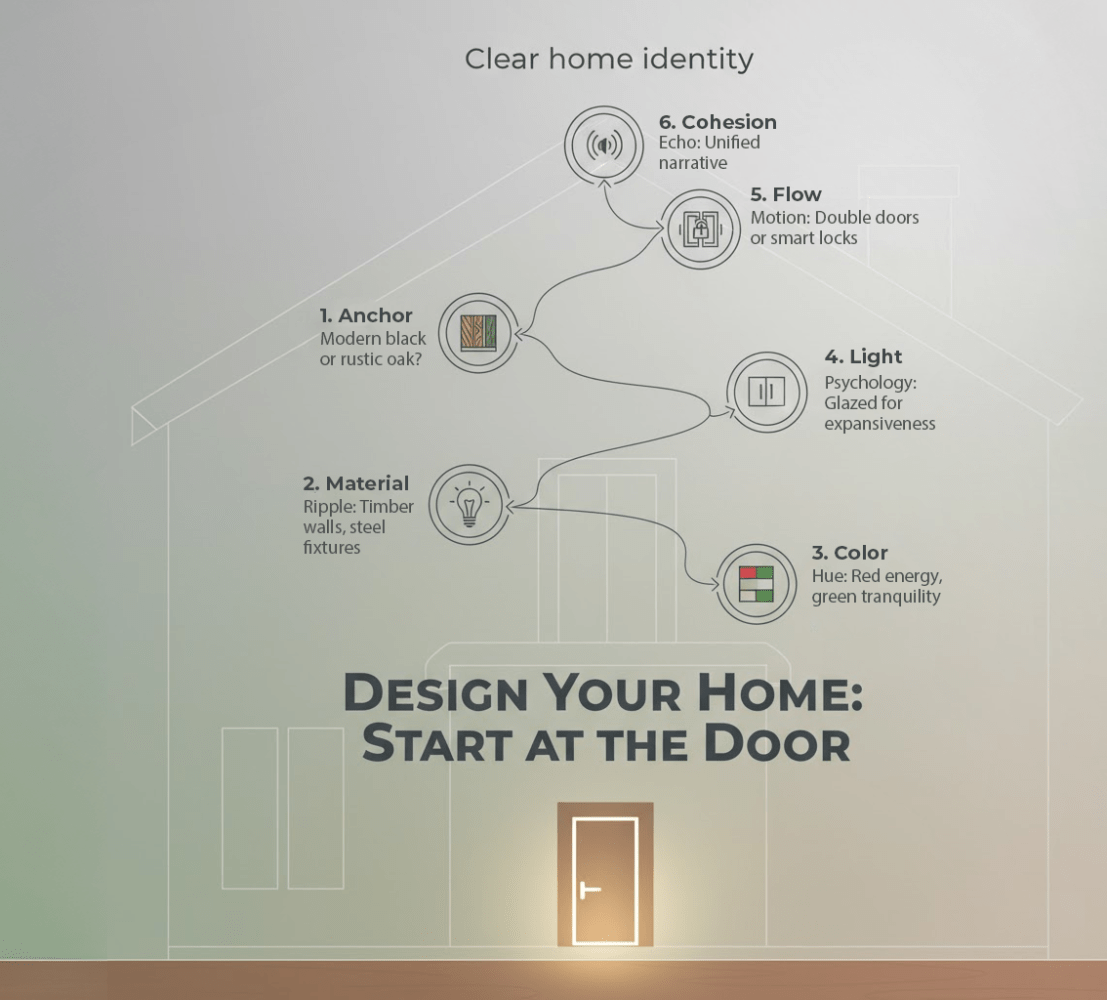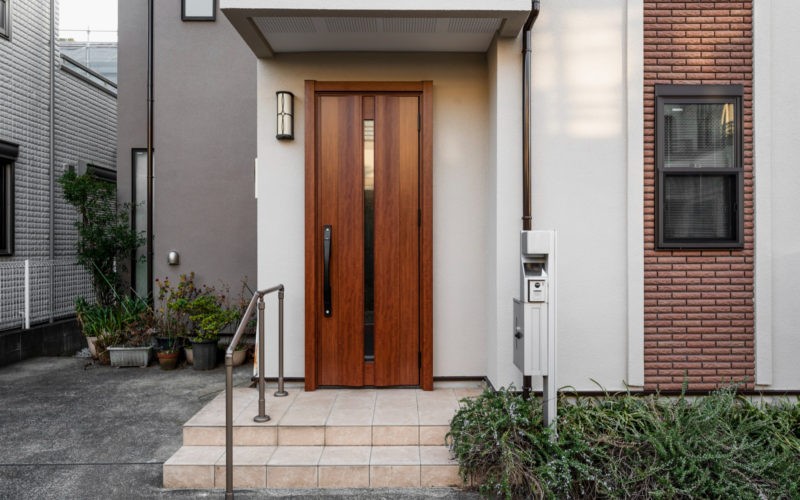We often treat the front door as a final flourish, a decorative capstone placed upon a finished structure. This approach gets everything backwards. That entrance is not an ending — it is the opening sentence of your home’s entire narrative. Its style, substance, and spirit should act as the foundational note from which all other design choices resonate. Designing from the doorway inward is a philosophy that prioritizes intentional arrival, creating a journey that feels cohesive, personal, and deeply considered from the very first step.

Establishing Your Design Anchor
Before selecting furniture or paint swatches, you must choose your home’s face. This primary entryway sets an uncompromising precedent. A sleek, black pivot door with a minimalist handle speaks a language of modern precision and clean lines. Conversely, a rustic, oak door with wrought-iron hardware suggests a story of warmth, tradition, and artisanal craft. This initial decision becomes your design anchor, a fixed reference point that will guide the selection of every material, color, and texture that follows it into the home’s interior. For those seeking a definitive starting point, the curated collections at Direct Doors offer a powerful source of inspiration, providing a clear vision of the aesthetic you wish to cultivate throughout your entire space.
Material as a Guiding Principle
The substance of your door should echo throughout your dwelling. Choosing a solid timber entry, for instance, isn’t just about the entrance itself. It’s a commitment to organic texture and natural warmth. This choice might then ripple inward, inspiring wood-clad feature walls, timber flooring, and live-edge shelving in the living area. If you select a steel-framed unit with expansive glass, you are championing an industrial, transparent aesthetic. That decision could logically lead to exposed metal light fixtures, polished concrete floors, and open shelving in the kitchen, creating a consistent material dialogue from the curb to the backyard.
The Psychology of the Entry Sequence
Crossing the threshold is a psychological event. A dark, cramped vestibule feels restrictive and unwelcoming. Designing this transition deliberately shapes the emotional experience of coming home. A glazed door or flanking sidelights pulls natural light deep into the house, creating an immediate feeling of expansiveness. The view from the foyer — whether it’s a glimpse of a curated art piece, a lush indoor plant, or the garden beyond — should be carefully staged. This visual connection invites you in, making the interior feel like a revealed destination rather than a series of closed-off boxes.
Color: The First and Most Powerful Declaration
The hue you choose for your front door is your most public design statement. It is the keynote for your home’s entire color palette. A bold, glossy red announces confidence and energy, a character trait that can then be subtly reflected in accent pillows, a statement armchair, or kitchen cabinetry elsewhere. A serene, sage green promotes tranquility, a mood that can be extended through earthy wall colors, natural linen upholstery, and botanical prints inside. This doesn’t mean every room must match the door, but rather that the door’s color should feel like a natural member of the broader chromatic family you build within.
Flow and Function from the Start
The door’s operational style dictates the initial experience of movement. A grand, double-door entry creates a ceremonial sense of occasion, suitable for a home with an open, flowing floor plan. A single, substantial door with a sophisticated electronic lock might better suit a modern, secure, and efficient lifestyle. This first interaction with your home’s mechanics — the act of opening it — sets a tactile precedent for the functionality and feel of the space, influencing choices about the flow between rooms and the placement of interior partitions.
Building a Cohesive Narrative
When you begin with the door, every subsequent choice becomes part of a conversation. The hardware on your kitchen cabinets can subtly reference the finish on the front door handle. The profile of your interior archways might echo the door’s paneling. This creates a resonant, layered effect, where the home feels not like a collection of decorated rooms, but a single, unified environment with a clear and compelling story. The design feels inevitable, not incidental.
A Home with a Clear Identity
Designing from the door inward is the antithesis of piecemeal decoration. It is a holistic method that ensures your home possesses a strong, clear identity from its public face to its most private corner. That entrance becomes more than just a way in; it is the thesis statement for your entire domestic life. By letting this single, powerful element guide you, you create a residence that is not just visually harmonious, but one that feels authentically and completely yours from the moment you reach for the handle.












